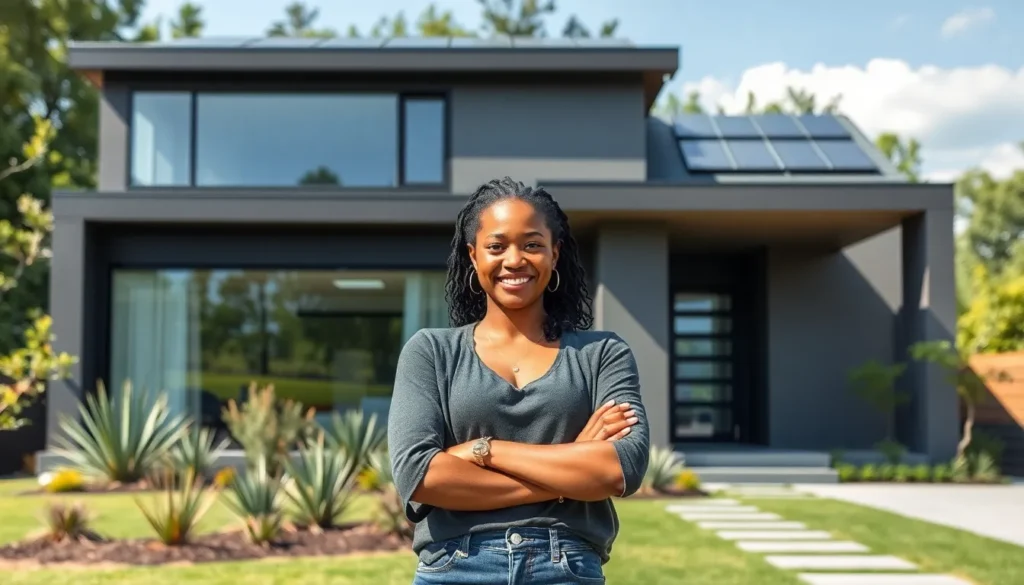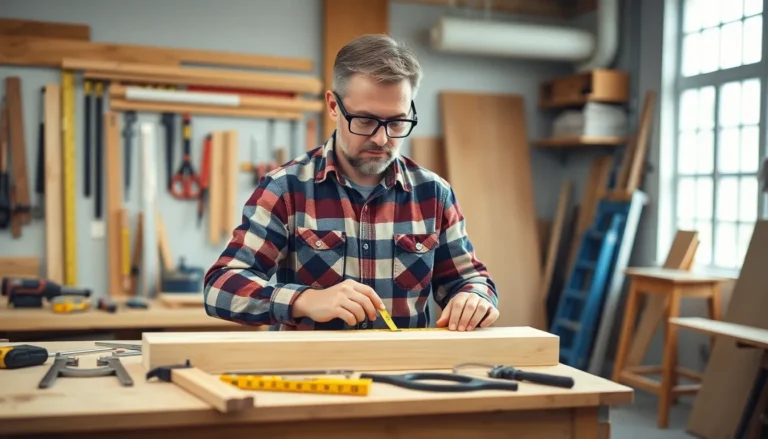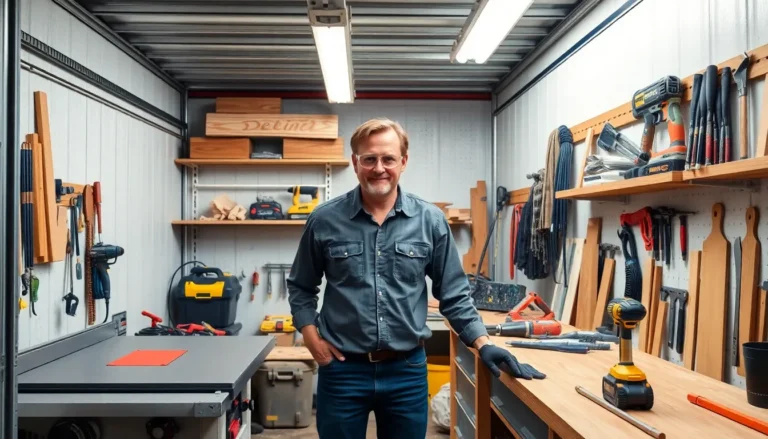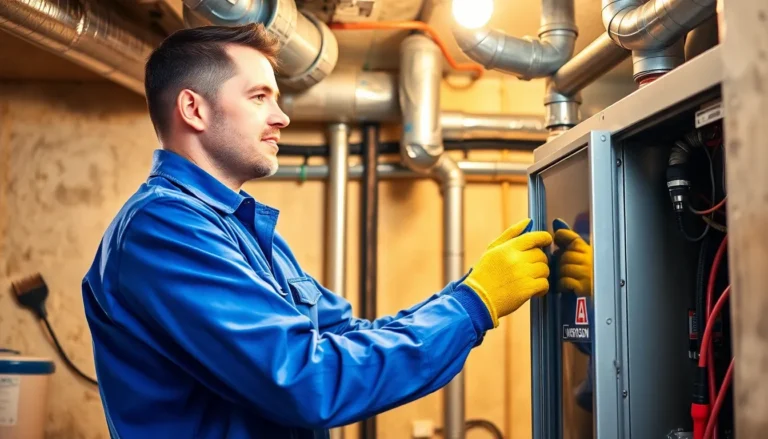Table of Contents
ToggleIn a world where home is no longer just a roof over one’s head but a sanctuary of style and innovation, modern housing trends are shaking things up. Gone are the days of cookie-cutter houses that look like they popped out of a factory. Today’s homeowners crave unique designs that reflect their personalities and lifestyles. Whether it’s a tiny house that fits in your backyard or a smart home that practically runs itself, the options are endless.
As people embrace the idea of living smaller and smarter, trends like sustainable materials and multifunctional spaces have taken center stage. Who wouldn’t want a home that’s not only chic but also eco-friendly? Dive into the latest trends that are redefining what it means to live well, and discover how these innovative ideas can transform any living space into a haven of comfort and style.
Overview Of Modern Housing Trends
Modern housing trends reflect a significant shift away from conventional designs. Unique architecture and personalized spaces dominate the landscape, showcasing individual expression. Smaller living areas gain traction as people embrace efficiency, focusing on smart use of space.
Sustainable materials emerge as essential elements in contemporary construction. Many homeowners prioritize eco-friendly choices, selecting options like reclaimed wood and recycled metal. Energy-efficient appliances and solar panels also play crucial roles in modern designs, further emphasizing environmental responsibility.
Multifunctional spaces become standard as versatility in homes increases. Rooms that serve multiple purposes, such as home offices that double as guest bedrooms, appeal to those with diverse needs. This flexibility allows inhabitants to maximize utility without sacrificing comfort.
Community-oriented designs trend upwards, fostering connections among residents. Developments that incorporate green spaces, parks, and communal areas encourage interaction. These features promote a sense of belonging and enhance the overall living experience.
Smart home technology integrates seamlessly into modern housing. Automated systems for lighting, security, and climate control add convenience and efficiency. Many opt for voice assistants to manage daily tasks, enhancing the appeal of high-tech homes.
Overall, these trends illustrate a broader cultural shift towards sustainable, personalized living. By focusing on eco-friendly materials, innovative designs, and community-oriented spaces, modern housing aligns closely with contemporary values and lifestyles.
Sustainable Design Innovations
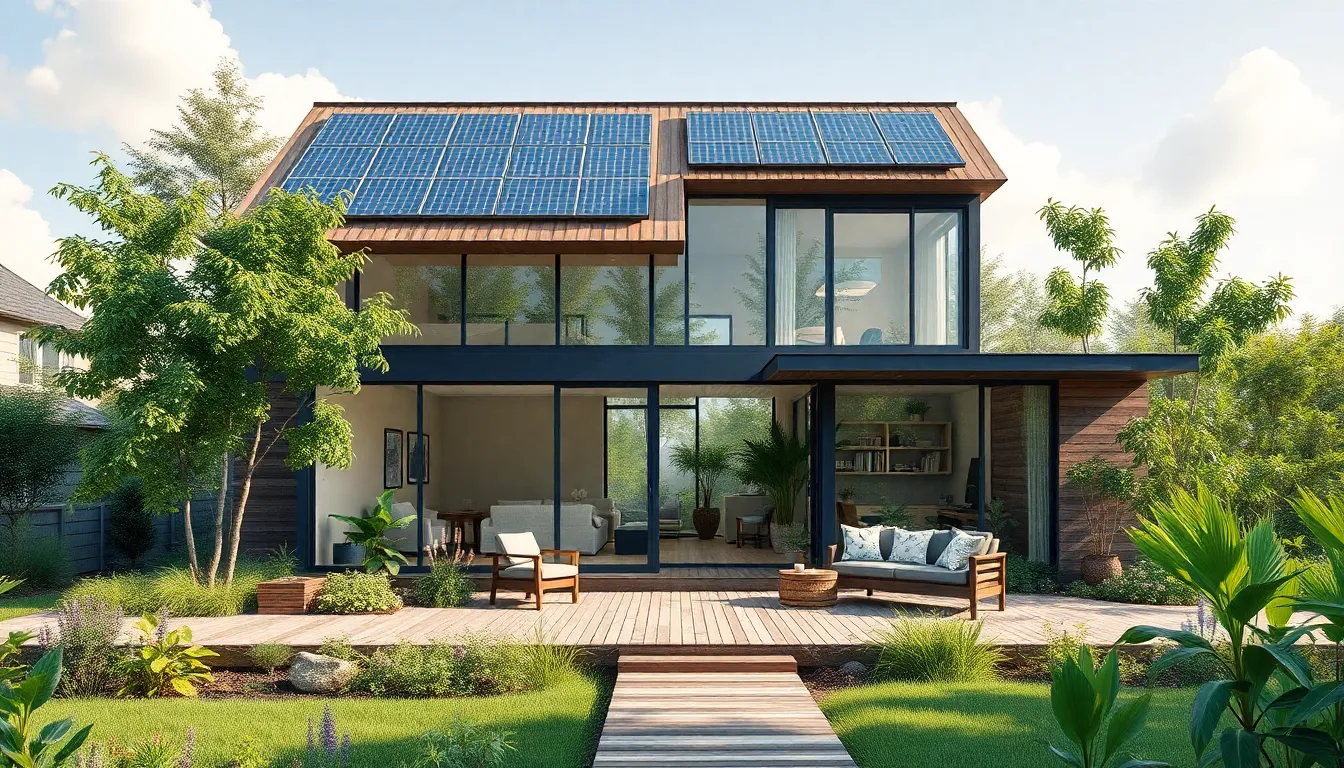
Sustainable design innovations in modern housing focus on integrating eco-friendly practices into everyday living. These trends prioritize environmental responsibility while enhancing comfort and aesthetics.
Eco-Friendly Materials
Reclaimed wood offers a unique character that enhances interior spaces. Bamboo serves as another popular choice due to its rapid growth and sustainability attributes. Recycled metal finds its place in modern homes, providing durability and strength without ecological harm. Non-toxic paints contribute to healthier indoor air quality, making living environments safer. These materials not only reduce waste but also feature design appeal, making them essential in contemporary housing projects.
Energy-Efficient Solutions
Energy-efficient solutions include the installation of solar panels, which significantly lower electricity bills. High-efficiency appliances, designed to consume less energy, also play a crucial role in reducing overall environmental impact. Smart thermostats allow residents to optimize heating and cooling based on their habits, enhancing efficiency. Insulated windows improve temperature regulation, adding comfort while conserving energy. Incorporating these solutions minimizes resource depletion and supports a sustainable lifestyle.
Smart Home Technologies
Smart home technologies represent a key facet of modern housing, enhancing convenience and efficiency in daily living. Automation and advanced security features play a crucial role in this innovative trend.
Automation and Control
Smart devices simplify daily tasks through automation. Smart lighting adjusts brightness based on natural light levels, reducing energy consumption. Smart thermostats learn user preferences, optimizing heating and cooling schedules for efficiency. Voice-controlled assistants manage multiple devices, providing users hands-free control. Integration with mobile apps allows residents to monitor and control their homes remotely. Enhanced connectivity between devices creates a seamless living experience, promoting comfort and ease in busy lifestyles.
Security Features
Advanced security features contribute significantly to the appeal of smart homes. Automated door locks offer keyless entry, allowing remote access for family and friends. Security cameras provide real-time monitoring, alerting homeowners to unusual activities. Motion sensors trigger alarms, enhancing property safety. Homeowners can receive instant notifications on their smartphones, ensuring peace of mind even when away from home. Integration with local law enforcement services streamlines emergency response, maximizing security at home.
Minimalism and Open Spaces
Minimalism emphasizes simplicity and functionality, promoting an environment that feels expansive and calm. This trend leads to designs that prioritize essential furniture pieces and open layouts.
Functional Layouts
Spatial efficiency defines functional layouts in modern homes. Living areas integrate seamlessly with dining and kitchen spaces, creating vast, uninterrupted zones for social interaction. Multi-use furniture options, such as convertible sofas or foldable tables, maximize utility without crowding. Clever storage solutions, like built-in shelves and under-stair compartments, keep clutter hidden. Such arrangements not only enhance movement but also make smaller spaces feel lofty and inviting.
Aesthetic Considerations
Aesthetic preferences in minimalism lean towards neutral palettes and natural materials. Light colors dominate walls, promoting a bright and airy atmosphere. Large windows invite ample natural light, reinforcing the connection with the outdoors. Sustainable elements, like reclaimed wood and bamboo, add unique charm. Clean lines and functional design ensure each piece serves a purpose while enhancing the overall aesthetic appeal. These choices reflect a commitment to both beauty and functionality in modern living environments.
Community Living Concepts
Modern housing trends embrace community living as a means to foster connection among residents. Innovative designs often include shared spaces that encourage interaction while maintaining individual privacy.
Co-Housing Models
Co-housing models emphasize collaborative living, blending private homes with communal areas. Residents share amenities such as kitchens, gardens, and recreational spaces, promoting a sense of belonging. This approach reduces housing costs and fosters relationships among neighbors, creating a supportive environment. Research indicates that nearly 30% of new developments incorporate co-housing elements, appealing to diverse demographics. Multifunctional spaces in these communities facilitate social gatherings, enhancing the overall lifestyle experience for all residents.
Urban Redevelopment Initiatives
Urban redevelopment initiatives focus on revitalizing existing neighborhoods through sustainable practices. Governments and developers work together to transform underutilized areas into vibrant communities, integrating green spaces and walkable environments. These projects often prioritize affordable housing options, ensuring accessibility for low- to middle-income families. Studies show that up to 40% of urban redevelopment projects include elements that support mixed-use developments, further enhancing local economies. By investing in infrastructure, cities aim to create attractive living spaces that balance urban density with quality of life.
Modern housing trends reflect a profound transformation in how people view their living spaces. The emphasis on sustainability and personalization is reshaping the architectural landscape. Homeowners are increasingly drawn to innovative designs that prioritize functionality and comfort while fostering community connections.
As smart technology continues to integrate into daily life, homes are becoming more efficient and convenient. The minimalist approach encourages simplicity, allowing for tranquil environments that enhance well-being. These trends not only cater to individual preferences but also promote a collective ethos of shared living and environmental responsibility.
Ultimately, these developments signal a promising future where homes are not just places to live but also expressions of identity and values.

